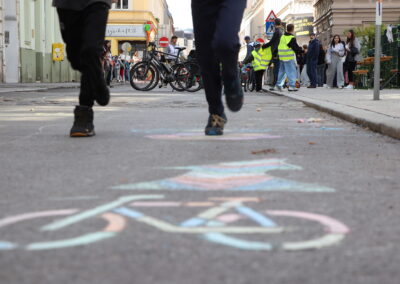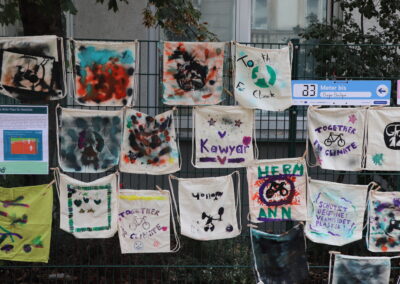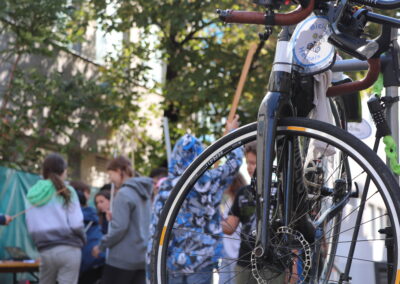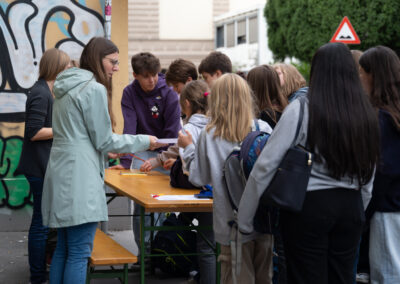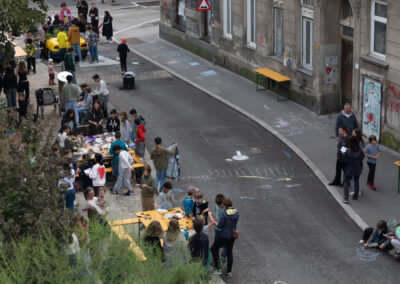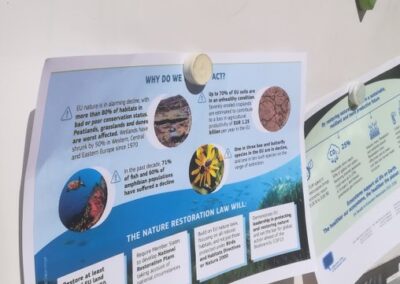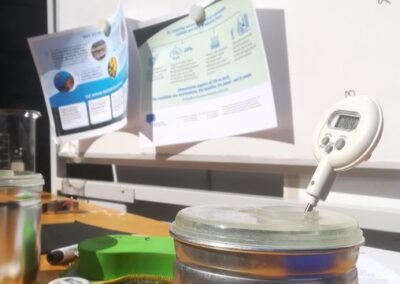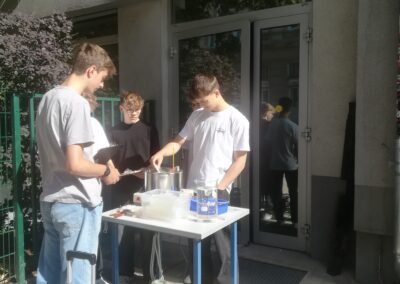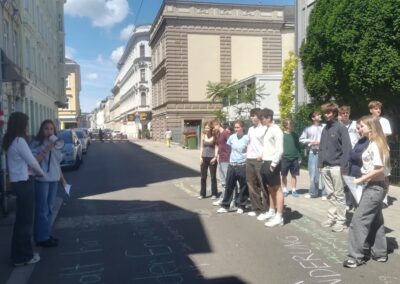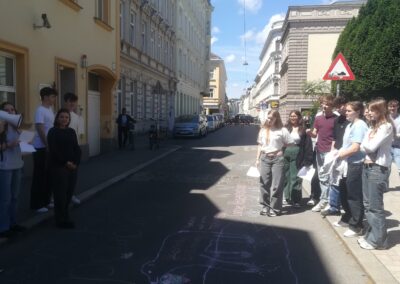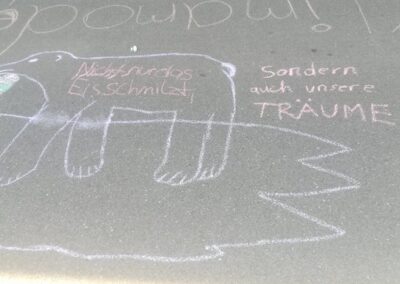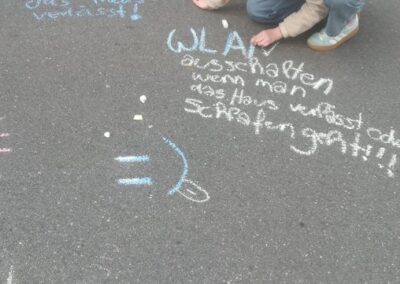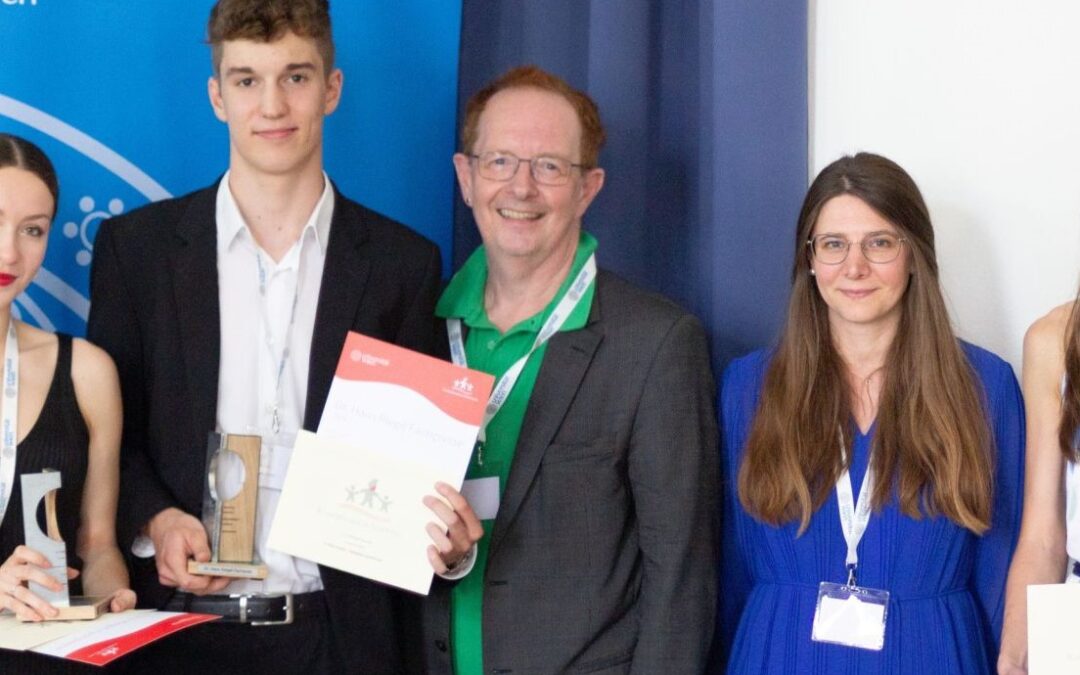

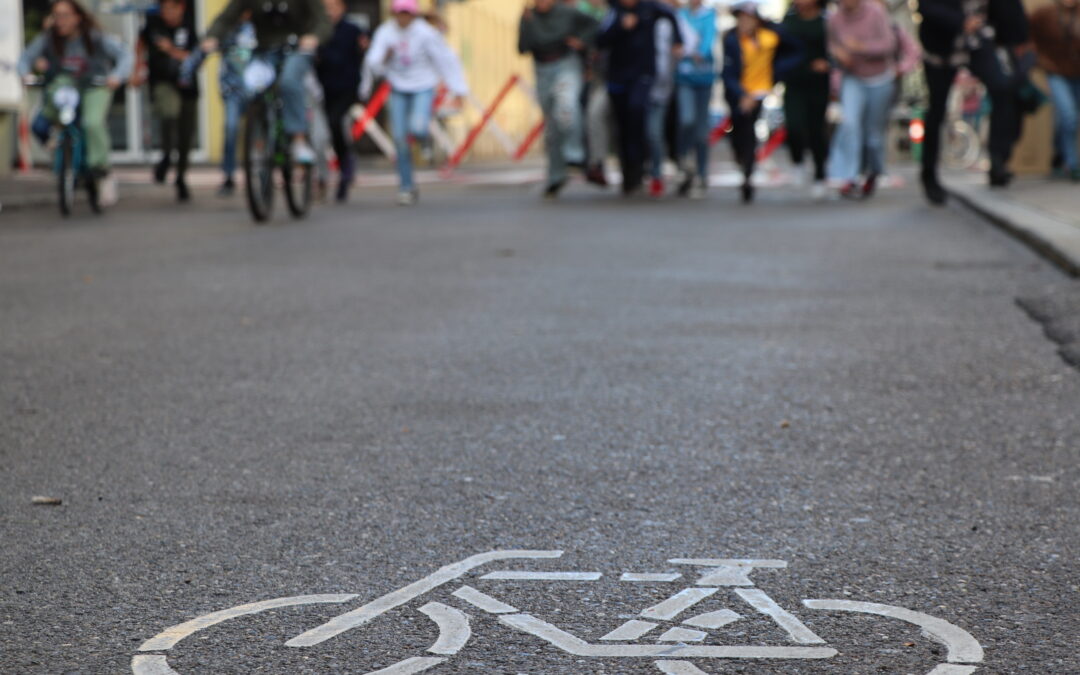
In der Geblergasse bewegt sich einiges!
Am 17. September fand nach längerer Pause wieder das Grätzlfest „Blühende Geblergasse“ im Rahmen der europäischen Mobilitätswoche statt. Der Start in den Tag wurde von einigen Schüler*innen und Eltern mit dem Fahrrad bestritten: Erstmals fuhr eine Gruppe an radfahrenden Kindern und Eltern, auch „Bicibus“ genannt, gemeinsam zur Schule. Der Rad-Tross startete in Neuwaldegg und kam zahlenstark vor 8 Uhr bei der Schule an, wo bereits ein eigens angeschaffter mobiler Radständer auf die abgestellten Fahrräder wartete. Aktiviert konnten die Schüler*innen damit in den Tag starten.

Erstmals fährt ein „Bicibus“ zur Schule

„Physik des Radfahrens“ mit Prof. Primetshofer und Fahrradlehrer Michael Doberer
Ab 12 Uhr hieß es schließlich „Manege frei“ für den öffentlichen Teil des Mobilitätsfestes. Als „guest star“ durften wir diesmal das „Cabriobeet“ Willkommen heißen: dieses mit allerhand Pflanzen gefülltes Cabrio ist ein Symbol dafür, wie viel Raum Autos auf Parkplätzen einnehmen – Raum, der dringend für Begrünung gebraucht wird, um für mehr Gesundheit, Lebensqualität und für dringend nötige Kühlung im hitzegeplagten Wiener Sommer zu sorgen.
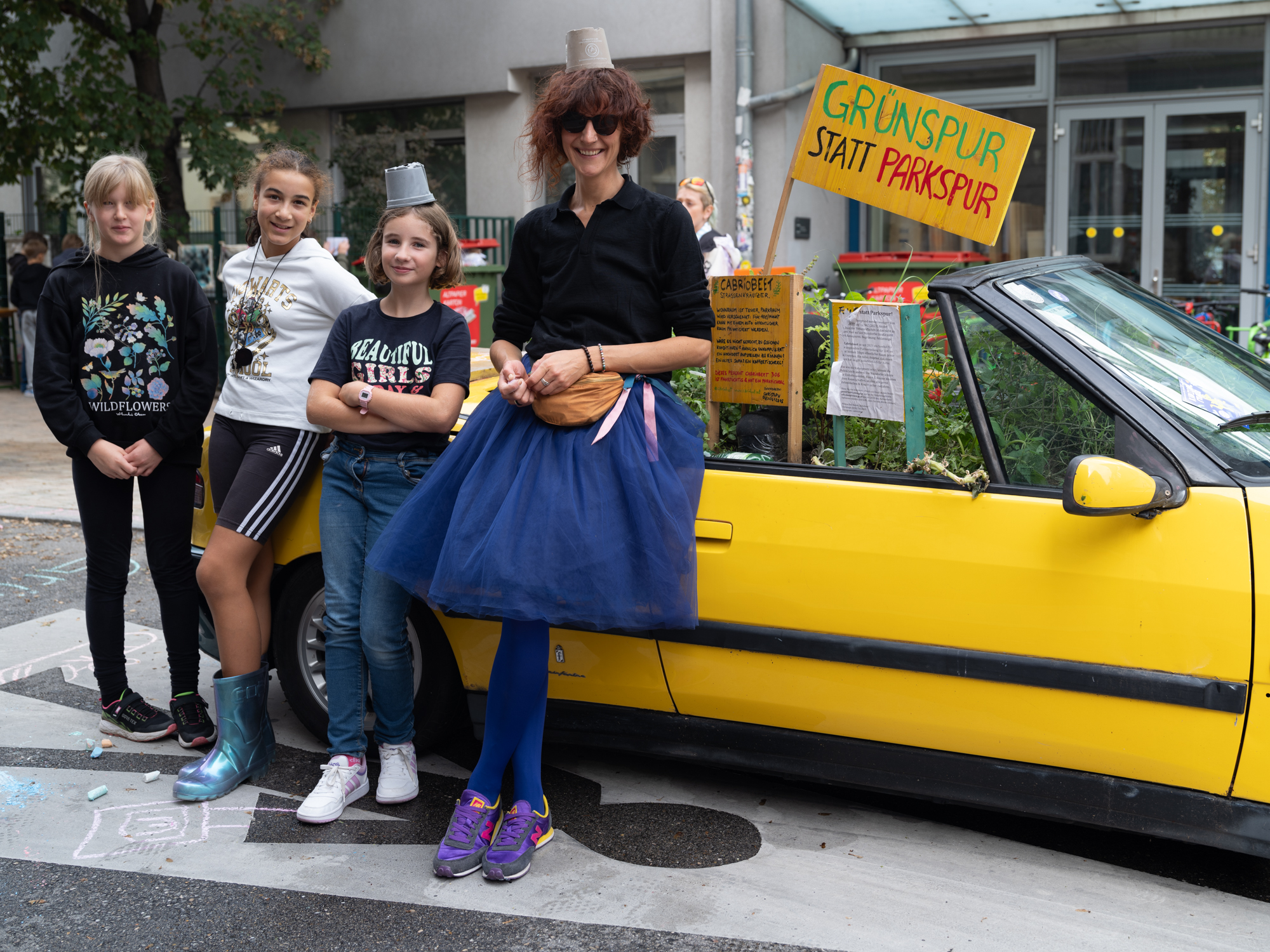
Das Cabriobeet erblüht in der Geblergasse
Viele Kinder konnten sich am Nachmittag im abgesperrten Straßenbereich frei bewegen; zudem wurden allerhand Attraktionen geboten: Die Radfahrschule „Schulterblick“ stellte einen Radparcours zur Verfügung, wo viele Kinder Runde um Runde drehten, wobei einige Kids sogar das Radfahren erstmals ausprobieren konnten. Ein von Prof. Gasser und Prof. Losbichler betreutes Mobilitätsrätsel brachte den Besucher*innen anhand von Infos des Verkehrsclub Österreich die Vorteile von Verkehrsberuhigung näher. Vom Verein „Recycling Kosmos“ wurde ein Fahrradschlauch-Upcycling-Workshop angeboten, bei dem man sich beispielsweise Schlüsselanhänger aus Schlauchstücken basteln konnte. Prof. Picallo Gil und Prof. Lici boten einen Textildruck-Workshop an, bei dem Umhängebeutel mit Fahrrad- und klimabezogenen Motiven gestaltet wurden.

Kinder erproben sich im Radparcours
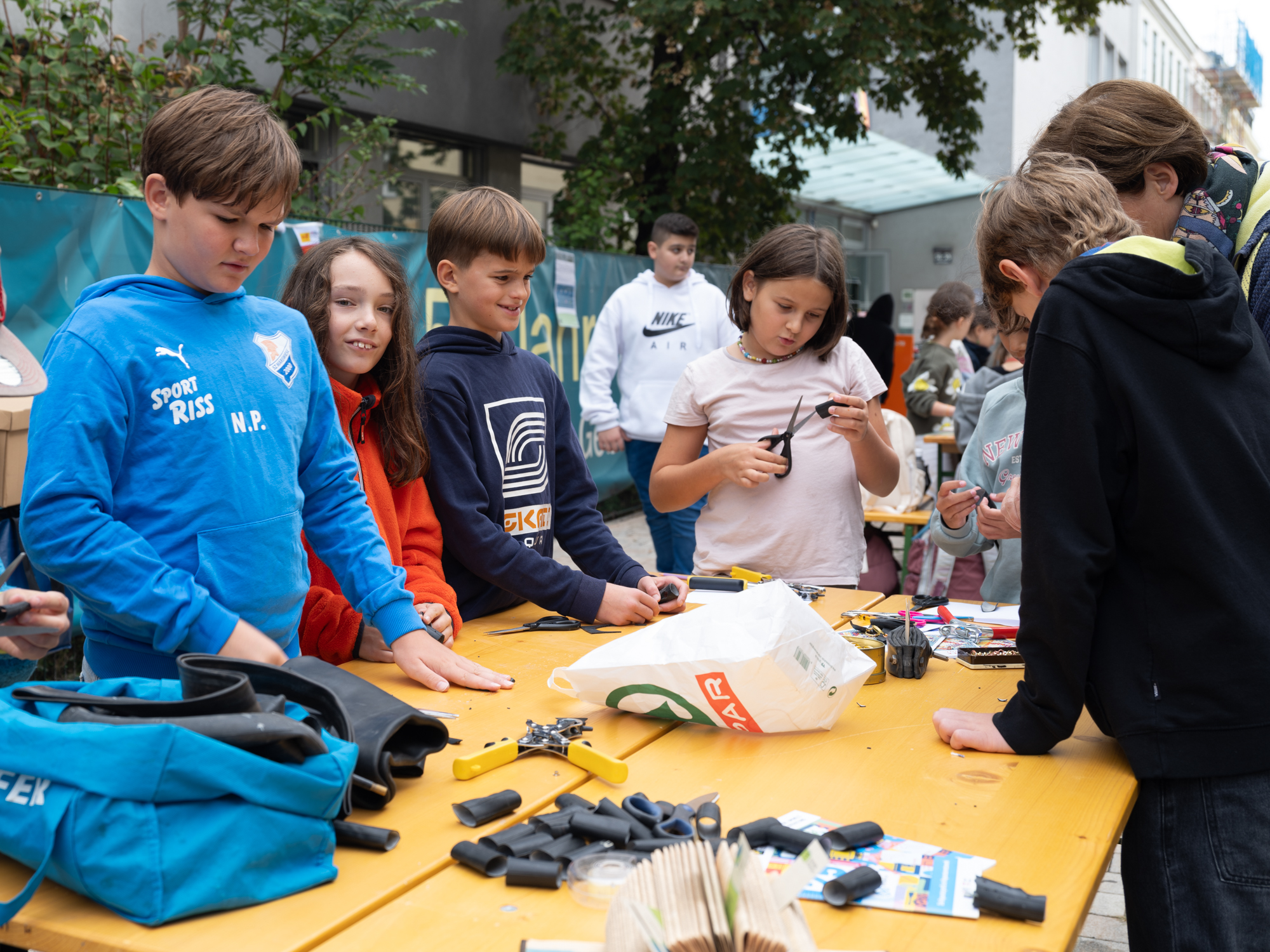
Hier werden Schlüsselanhänger aus alten Fahrradschläuchen gebastelt
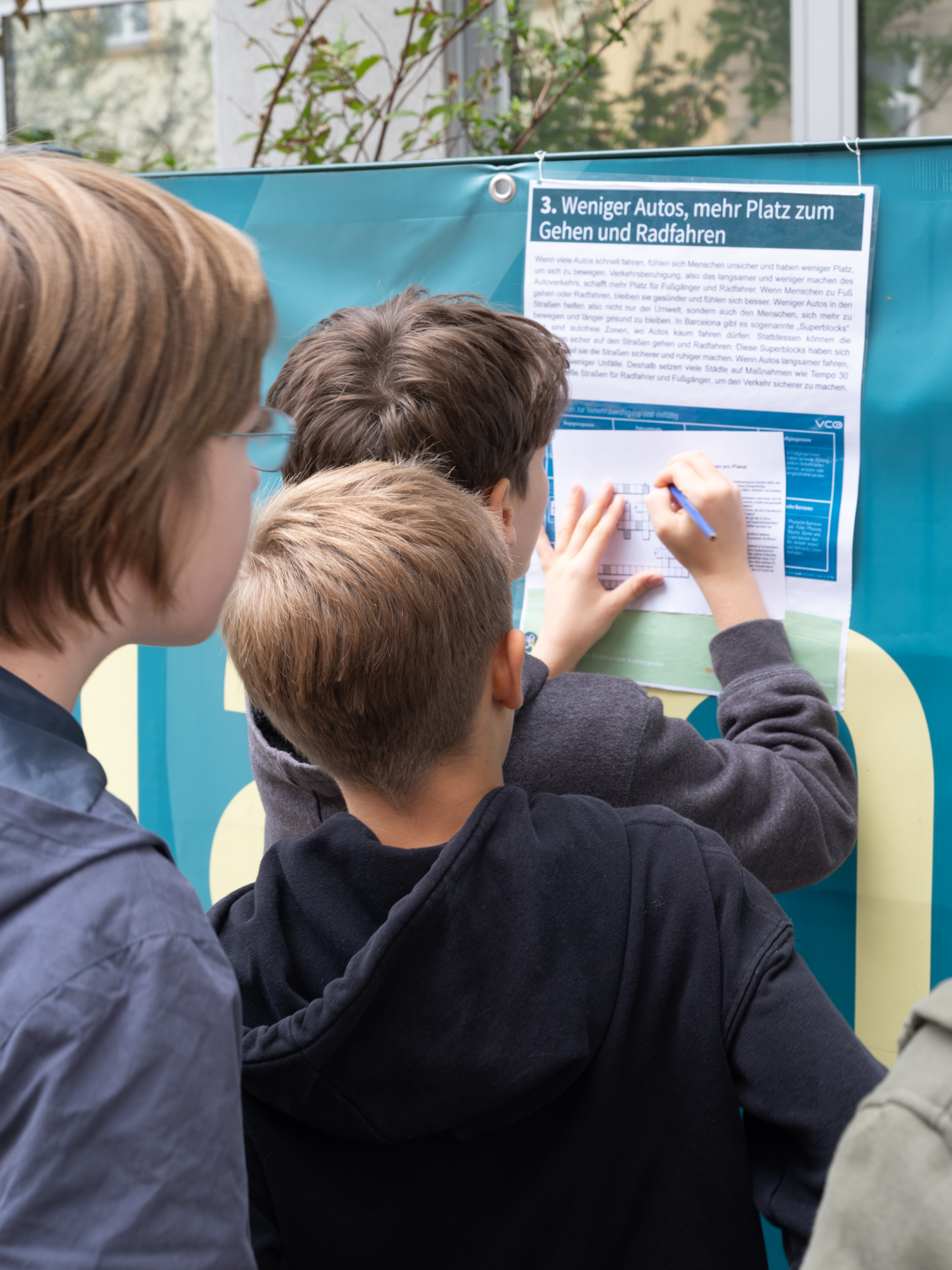
Bei einer Rätselstation rauchen die Köpfe
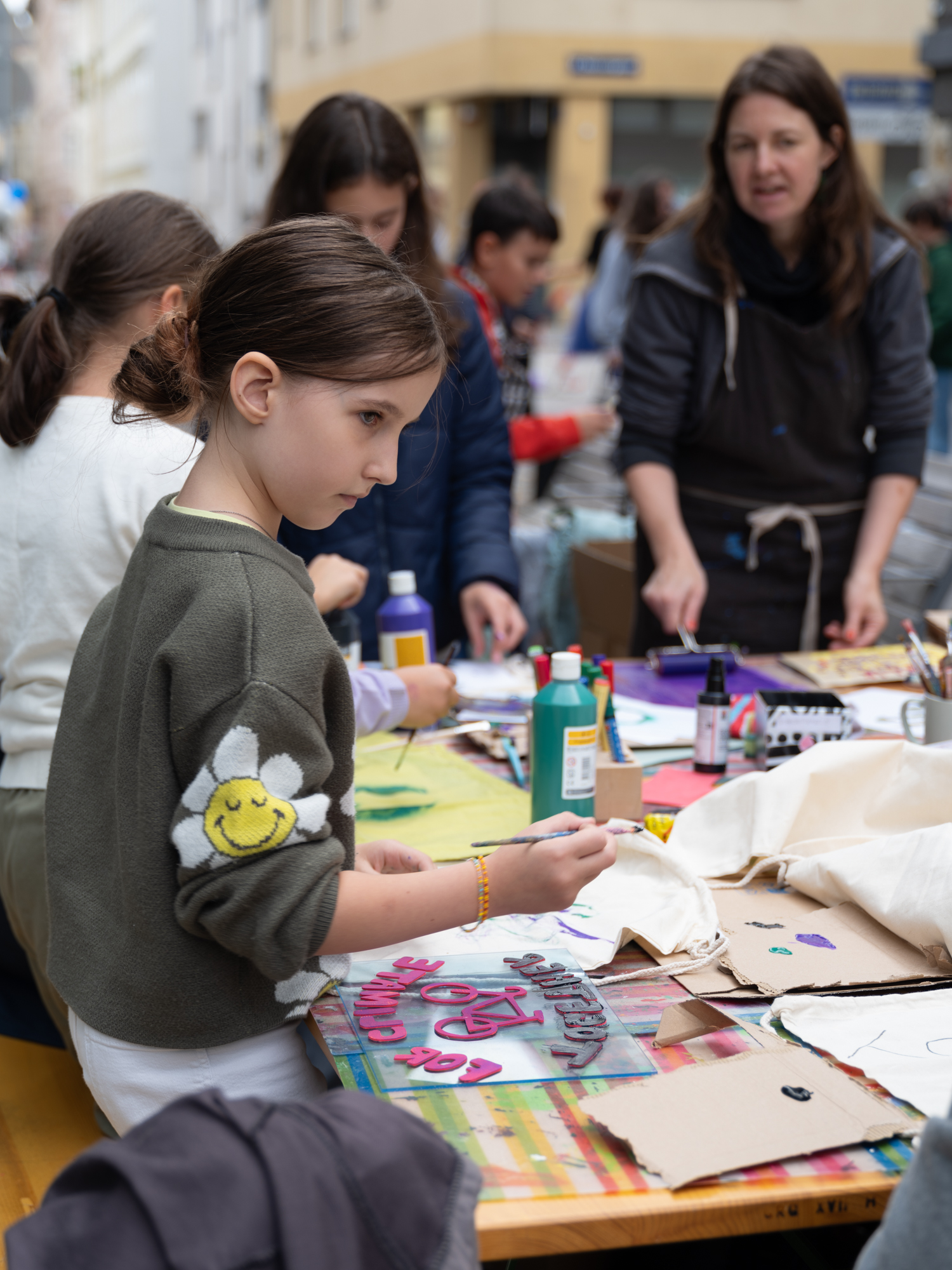
Zahlreiche Umhängetaschen wurden bedruckt und bemalt

Science Slam
Am Donnerstag, den 13. Juni 2024, wird der erste Science Slam im Zuge des Fachs PIN (Projekte in den Naturwissenschaften) von 17h bis 19h im Festsaal des GRg 17 stattfinden. Dazu laden wir euch ❤️lich ein!
19.00h: Siegerehrung der besten Präsentationen und des Siegerposters
Wir freuen uns auf euer Kommen!

Physikunterricht auf der Straße
Nachdem der EU-weite Klimastreik des 31.5. auf einen schulfreien Tag fiel, haben mehrere Klassen dafür votiert, einen Klimaprotest im Rahmen einer angemeldeten Demonstration am 29.5. auf der Straße vor der Schule durchzuführen. Von 8-13 Uhr stand der Physikunterricht dabei ganz im Zeichen der Klimabildung rund um aktuelle Themen der kommenden EU-Wahl:
Die MINT-Schwerpunktklasse 5D hat im Rahmen des geblockten Physikworkshops den Zusammenhang zwischen Thermodynamik und des Renaturierungsgesetzes, welches aktuell politisch auf der Kippe steht, behandelt. Welche Rolle die „spezifische Wärmekapazität“ von Stoffen dabei spielt, haben wir im Rahmen eines Experimentes erarbeitet.
Die 6C hat sich anschließend mit klimakrisenbezogenen Aussagen von Politiker*innen beschäftigt und diese mit Prof. Primetshofer kritisch beleuchtet. Die Ergebnisse der Gruppenarbeit wurde dabei mit Straßenkreide auf der Straße festgehalten.
Die 6B führte ebenfalls mit Prof. Primetshofer eine Gruppenarbeit durch – dabei wurden Aussagen von Klimaskeptiker*innen wissenschaftlich analysiert und richtiggestellt. Das Ergebnis wurde ebenfalls mit Straßenkreide festgehalten.
Schließlich fand noch eine Unterrichtseinheit mit der 3A statt: Nachdem das Thema elektrische Energie vor kurzem im Physikunterricht behandelt wurde, stand der Zusammenhang der Thematik mit der Ökodesign-Verordnung, welche den Energiebedarf von Elektrogeräten (speziell im Standby-Betrieb) regelt, am Plan. Zudem wurden Vorschläge für Energiespartipps im Haushalt auf die Straße aufgemalt.
Der Vormittag auf der gesperrten Straße war in mehrfacher Hinsicht eine interessante Erfahrung: Schüler*innen bekamen die Möglichkeit, auf großer Fläche ihre Ideen preisgeben zu können, und die Öffentlichkeit führte zu spannenden Interaktionen mit Passant*innen, wobei fragende Blicke bis kritische Aussagen, aber auch viel Zuspruch dabei waren. Eine Gruppenarbeit mit dem Megafon präsentieren zu können, hat jedenfalls einigen Schüler*innen sichtlich Spaß gemacht.
Ein großer Dank gebührt unserem Oberschulwart Michael Kuntner-Kettele, der sich spontan bereit erklärt hat, die Straßensperre zu betreuen, und dies hochprofessionell abgewickelt hat. Danke auch an die Kolleg*innen, die zwischendurch mitgeholfen haben!
Reinhard Klauser
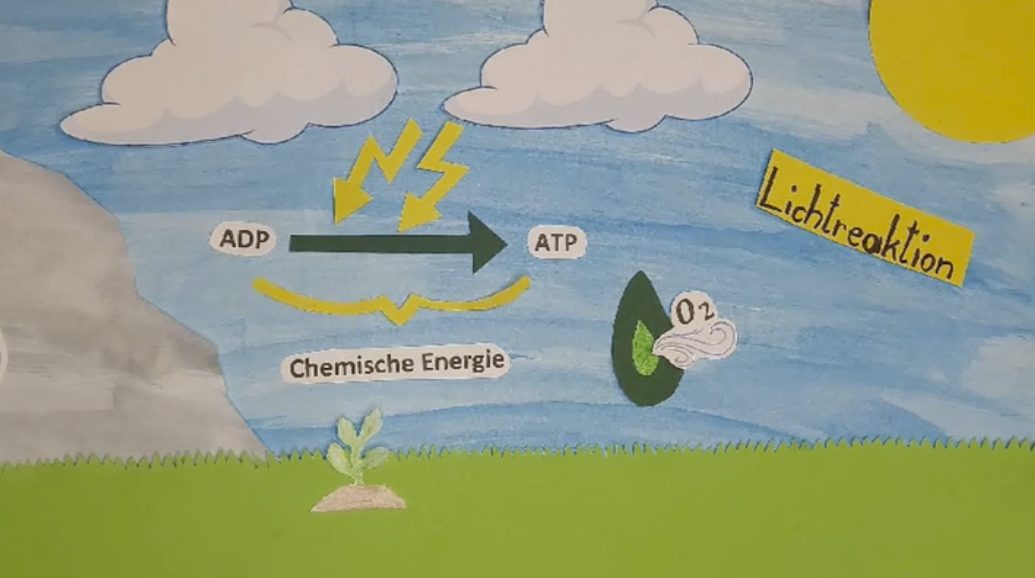
MINT-D? Klasse 5D
MINT steht für die Fächer Mathematik, Informatik, Naturwissenschaft und Technik. Was aber, wenn eine Klasse neben der Spezialisierung auf Naturwissenschaften auch in geisteswissenschaftlichen Fächern Großartiges leistet? Ganz einfach! Sie wird zur MINT-D-Klasse, wobei das D in diesem Fall für das Unterrichtsfach Deutsch steht. In diesem hat die Klasse 5D mit Katrin Hörbinger fantastische Stop-Motion-Videos zu den Themen Atomkraftwerk, Photovoltaik und Photosynthese erstellt. Wo da das Fach Deutsch bleibt? Die Schüler*innen haben ihre Themen entsprechend der drei großen literarischen Gattungen erarbeitet. So haben sie einen tragischen-komischen Film (Dramatik) rund um Atomi und seine Freunde zum „Atomkraftwerk“ angefertigt, ein Märchen (Epik) über das nachhaltige Peer’sche Königreich, das auf Photovoltaikbetrieb umstellt, erzählt, und in Gedichtform (Lyrik) vom Wunder der Photosynthese berichtet.
Die 5D beweist: Wir sind Allrounder*innen!
Viel Spaß beim Anschauen der Videos!
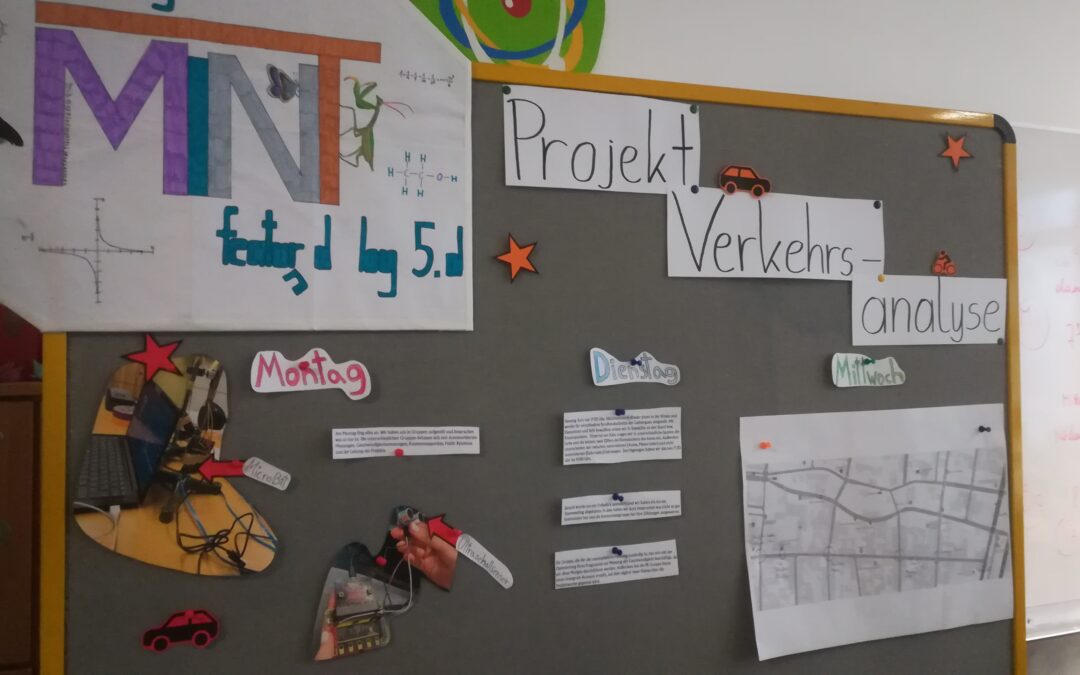
MINT 5D: Verkehrsanalyse Geblergasse
Die MINT-Schwerpunktklasse 5D hat sich in der Projektwoche im Semesterfinale richtig ins Zeug gelegt – mit dem Ziel, den Straßenverkehr rund um die Schule unter die Lupe (oder besser gesagt unter die Radar- und Ultraschallwellen) zu nehmen. Die Ergebnisse können sich nicht nur sehen lassen, sondern haben auch bereits konkrete Auswirkungen in der städtischen Verkehrsplanung: Die auf Social Media (die PR-Projektgruppe hat einen eigenenInstagram-Account erstellt) geteilten Ergebnisse wurden etwa von der Mobilitätsagentur der Stadt Wien aufgegriffen (z.B. dass trotz des kalten Jännermorgens ein Drittel der Straßenverkehrsteilnehmer*innen in der Geblergasse am Rad Richtung Innenstadt unterwegs war) und an betreffende Planungsstellen weitergeleitet; die Ergebnisse wurden auch mit dem Hernalser Bezirksvorsteher Peter Jagsch diskutiert, welcher die Resultate an die Magistratsabteilung 46 (Verkehrsorganisation und technische Verkehrsangelegenheiten) weiterleiten wird.
Es war jedenfalls wirklich beachtlich, welchen Eifer die Schüler*innen der 5D in der letzten Woche des ersten Semesters an den Tag gelegt haben. Die Planungen der Verkehrserhebungen – ob Verkehrszählungen oder Geschwindigkeitsmessungen – waren alles andere als einfach. Auch Rückschläge waren dabei, aber das hat viele umso mehr angespornt, herzeigbare Resultate zu liefern. Dieser Prozess kann im Leitungsbericht der Projektleitung (Lisa Steindl, Tasneem Younes und Georgije Straka) nachgelesen werden.
Die erzielten Resultate rund um manuelle sowie automatisierte Verkehrszählungen und Geschwindigkeitsmessungen sind in der Ergebnispräsentation im Überblick dargestellt. Die Schüler*innen der 5D haben damit einen wichtigen Beitrag zur datenbasierten Gestaltung des öffentlichen Raumes im Schulumfeld geliefert.
Reinhard Klauser

